The thyroid gland affects many aspects of the body, including metabolism, growth and development, cardiovascular health, the nervous system, and the digestive system. Abnormalities in thyroid function (e.g., hyperthyroidism or hypothyroidism) can lead to a variety of health problems, so maintaining proper thyroid function is critical to overall health. In modern medicine, thyroid function tests are an important tool for assessing thyroid health. However, many factors can interfere with the results of thyroid function tests, with thyroid hormone itself being a significant interfering factor. In this article, we will discuss the effects of thyroid hormones on thyroid function tests based on the article Thyroid Hormones and Interference in Thyroid Function Tests: A Review.
The thyroid gland, located in the neck, is an important endocrine gland that is primarily responsible for the synthesis and secretion of thyroid hormones. In the endocrine system, the synthesis and regulation of thyroid hormones are essential for maintaining metabolic homeostasis in the body. Thyroid hormones mainly consist of thyroxine or tetrahydrothyronine (T4) and triiodothyronine (T3), which circulate in the bloodstream via thyroid hormone binding protein (THBP). Normally, thyroid hormone production is finely regulated by the hypothalamic-pituitary-thyroid axis. The thyroid gland in a normal adult produces about 90 μg of thyroxine and less than 10 μg of triiodothyronine (iodothyronine) per day. Some tissues, notably the liver, convert less than 50% of T4 to T3. Much of the daily T3 secretion comes from peripheral 5′-deiodination of T4 rather than direct glandular secretion. Thyroid hormone is tightly bound to plasma proteins, especially T4 compared to T3. This explains its long half-life, which is 8 days for T4 and only about a day for T3. The nuclear receptor activity of thyroid hormones is more favorable for T3 binding than T4, which rationally explains the fast onset and high biological strength of T3(Bilder, 2014; Shim, Chong, & Lee, 2017).
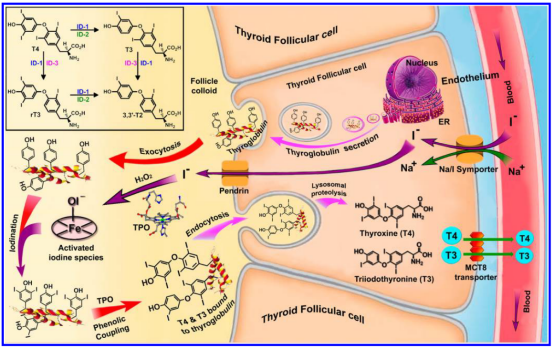
Figure 1 Schematic diagram of the regioselective deiodination of thyroid peroxidase catalyzing the synthesis of thyroid hormones and thyroxine from thyroglobulin (Debasish Manna, Gouriprasanna Roy, & Mugesh, 2013)
Synthesis and function of thyroid hormoneThe Thyroid Hormone Synthesis Process: Thyroid cells synthesize thyroglobulin as a thyroid hormone precursor and take up iodine ions from the blood through iodine transporters, which combine to form monoiodothyronine (MIT) and diiodothyronine (DIT). The synthesized T3 and T4 are stored in the thyroid gland as thyroglobulin complexes. When needed, thyroid hormones are released into the bloodstream and enter the circulation (Debasish Manna et al., 2013). The binding and release of T3 and T4 are mainly dependent on plasma proteins, particularly thyroxine-binding globulin (TBG) and transthyretin (TTR). In vivo, free thyroid hormones (FT4 and FT3) make up only a very small fraction, but are significantly more biologically active than bound hormones (Edet, Omon, Agwu, Eze, & Nwigube, 2024).
Thyroid hormones play an important role in basal metabolism, protein synthesis, lipid metabolism and carbohydrate metabolism. In addition, thyroid hormones influence growth and development in children and fertility in adults. The physiological functions of thyroid hormones are not limited to metabolic regulation, but also include effects on the central nervous system, stimulation of the respiratory center, and development of muscle fibers.
Manifestations of abnormal thyroid functionHypothyroidism (hypothyroidism): presents with weight gain, fatigue, bradycardia, cold intolerance and constipation. Hypothyroidism is divided into primary, secondary, and tertiary stages (Shahid, Ashraf, & Sharma, 2024). In primary hypothyroidism, the thyroid gland produces less thyroid hormone resulting in a compensatory increase in TSH. In secondary hypothyroidism, pituitary dysfunction leads to decreased TSH release and decreased T3 and T4 levels, while hypothalamic dysfunction leads to tertiary hypothyroidism resulting in decreased TRH levels, decreased TSH levels, and decreased T3/T4 levels. Graves' disease and Hashimoto's thyroiditis are caused by hyperthyroidism and hypothyroidism, respectively (Shahidet al., 2023).Hyperthyroidism (hyperthyroidism): manifested by weight loss, heat intolerance, diarrhea, hand tremors and muscle weakness. Hyperthyroidism can lead to overproduction of T3 and T4 with a decrease in compensatory TSH. In addition, thyrotropic adenomas can lead to dysregulation of TSH production, resulting in elevated T3 and T4 levels.
Common methods of thyroid function testingClinically, the assessment of thyroid function relies on serum levels of thyroid hormone (TH), thyroid-stimulating hormone (TSH), free T4 (FT4), and free T3 (FT3). TSH is secreted by the anterior pituitary gland and is regulated by thyroid-stimulating hormone-releasing hormone (TRH) secreted by the hypothalamus. The preferred test to check for thyroid abnormalities is the TSH and FT4 test (Paczkowskaet al., 2020), to determine whether the abnormality originates from the thyroid gland itself (primary abnormality), the pituitary gland (secondary abnormality), or the hypothalamus (tertiary). Free T4 can be used as a parallel index of serum T3 levels (Edet et al., 2024). Usually, T4 levels are the last to become abnormal because upstream processes produce TSH and T4 and maintain available T3 levels through their own consumption. Normally, T4 and T3 levels regulate TSH secretion through a negative feedback mechanism. When hypothyroidism occurs, TSH levels are elevated, whereas in the case of hyperthyroidism, TSH levels are reduced. These tests are helpful in diagnosing conditions such as hyperthyroidism and hypothyroidism. However, the accuracy of the results may be affected by a number of factors.
Interfering Factors Affecting Thyroid Function TestsA variety of factors, which can be categorized as endogenous or exogenous, can interfere with the accuracy of thyroid function tests (Braunstein, 2022).
1. Endogenous interferencesAbnormalities in serum composition: Hypercholesterolemia, hemolysis, and abnormal proteins may lead to biased test results.Biotin effects: Biotin is a water-soluble vitamin, and excessive intake can interfere with immunoassays, leading to false-positive or false-negative results.Endogenous hormone fluctuations: Thyroid hormone levels themselves are subject to physiologic fluctuations, especially in different physiologic states (e.g., pregnancy, stress), which may lead to changes in test results.
2. Exogenous interferencesExogenous Thyroid Hormones: The use of exogenous hormones while the patient is on thyroid hormone replacement therapy may result in elevated serum levels of T3 and T4, which may interfere with test results.
Drug interference: Certain drugs (e.g., hormone replacement therapy) may affect the metabolism and secretion of thyroid hormones, resulting in inaccurate test results.
Cross-reactivity: The presence of exogenous hormones or drugs, hormone isomers, and subunit complex hormone-protein interactions may cross-react with the antigens in the assay and affect the interpretation of the results.
3.Interference analysis of experimental techniquesThyroid function is studied primarily by measuring free thyroid hormone and thyrotropin levels. The generation of antigen-antibody complexes (Ag-Ab) depends on the binding or binding activity between the antigen-binding site of the Fab fragment of the antibody and the specificity determinant of the antigen molecule (Paczkowskaet al., 2020). The advent of immunochemical techniques, the use of various markers, and the continuous improvement of assay methods have greatly increased the sensitivity of analytical detection of thyrotropin, but have also introduced potential interfering factors.
Non-specific binding of antibodies: the nature of antigen-antibody binding may lead to false positive or false negative results. Antigen-antibody binding is based on the traits and structure of the antigen rather than chemical reactivity. Due to the nature of non-covalent bonding, antigen-antibody interactions are static in most cases. The size of the variable region of the antibody and the pattern of recognition on the ligand present a weakness of the immunoassay because the differences between the analyte and other chemical components are very small.
High-dose hook effect: in high-concentration samples, antigens may bind poorly to antibodies, resulting in measurements that are lower than actual levels (Vashist and Luong, 2018).
Interference from biological agents: autoantibodies, heterophilic antibodies, biotin, anti-streptococcal hemolysin antibodies, anti-streptavidin and anti-ruthenium antibodies.
How to improve the accuracy of testTo improve the accuracy of thyroid function tests, the following measures are recommended:
Detailed medical history: Before performing a thyroid function test, the doctor should take a detailed medical history, including the patient's use of medications and any factors that may have affected thyroid function.
Reasonable timing: Choose the right time to test, for example, test at a certain time after the drug has been administered to minimize the effects of exogenous hormones.
Multi-testing: Combining the results of several thyroid function tests to comprehensively assess a patient's thyroid health, rather than relying on just a single indicator.
Thyroid hormones play an important role in thyroid function testing, and there is a relative diversity of factors that can affect thyroid function test results. Therefore, understanding the possible interfering factors is critical to the accurate diagnosis of thyroid disease. When interpreting thyroid function tests, clinicians need to consider the patient's medical history, medication use, and other possible interfering factors to ensure diagnostic accuracy. As technology advances, the sensitivity of immunoassay methods continues to improve, but laboratory interferences remain a non-negligible problem that must be adequately addressed in clinical practice.
Thyroid Function Marker Chemiluminescent Assay Program
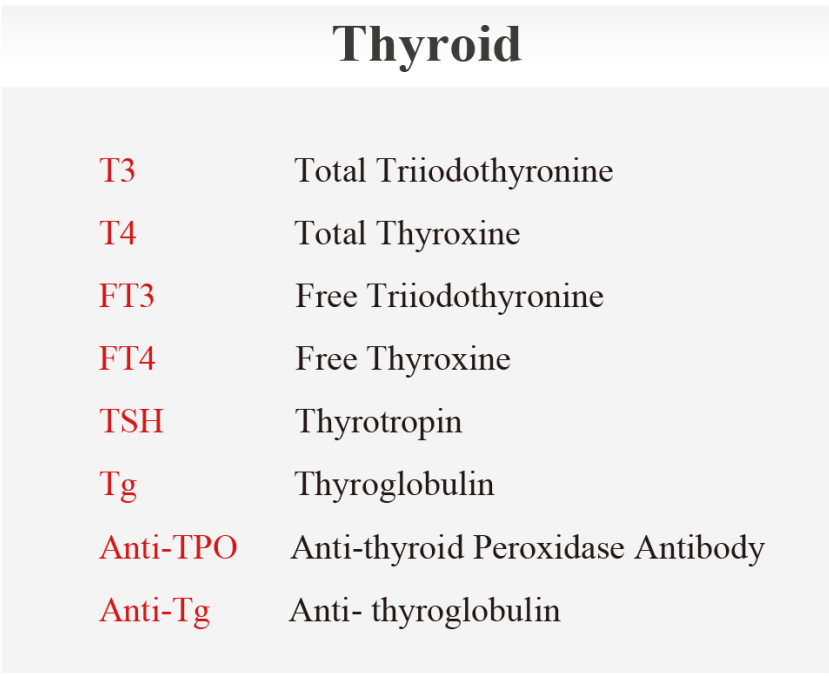
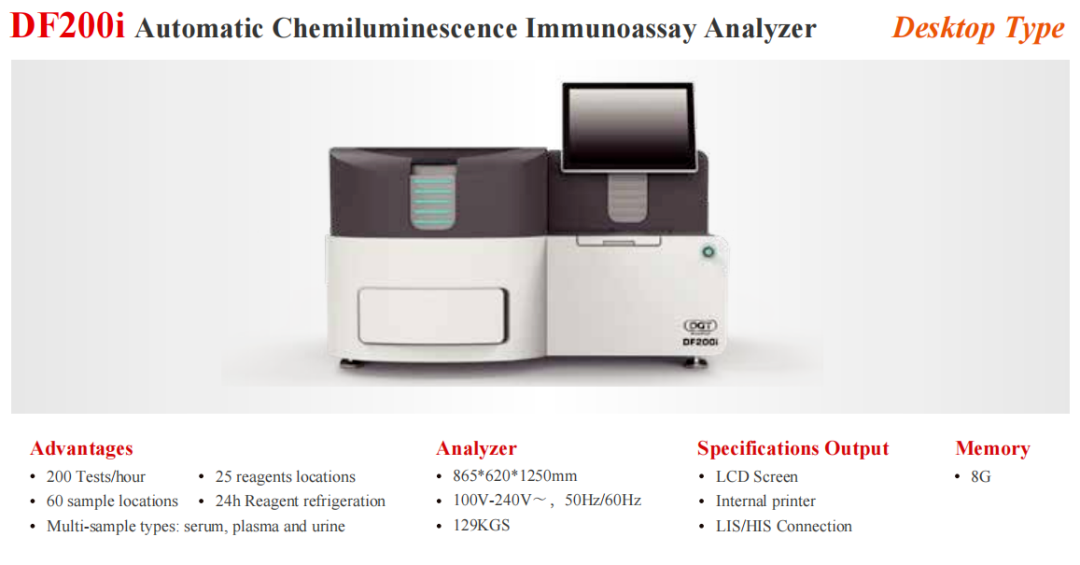
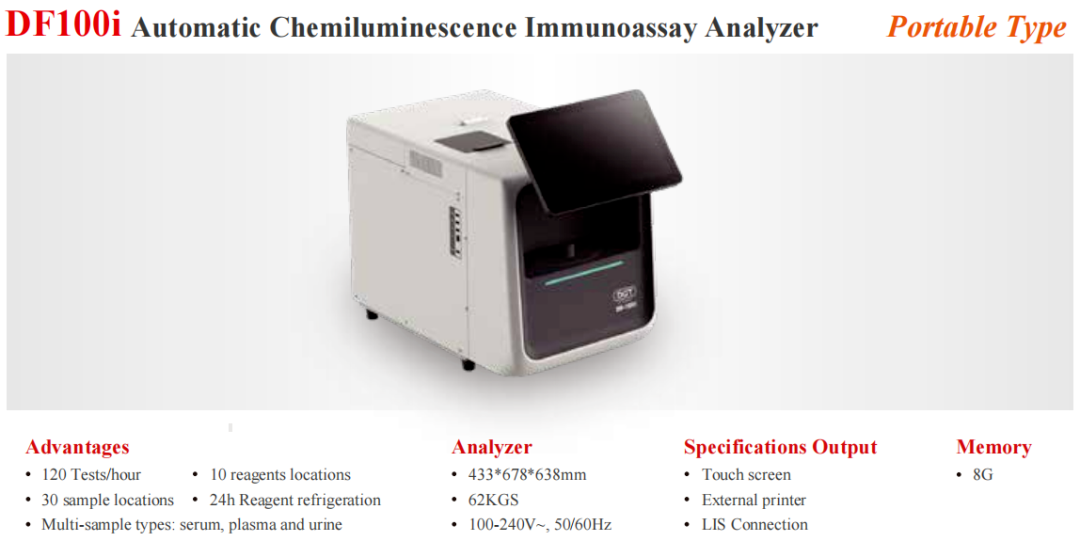
Thyroid Function Marker POCT Test Program
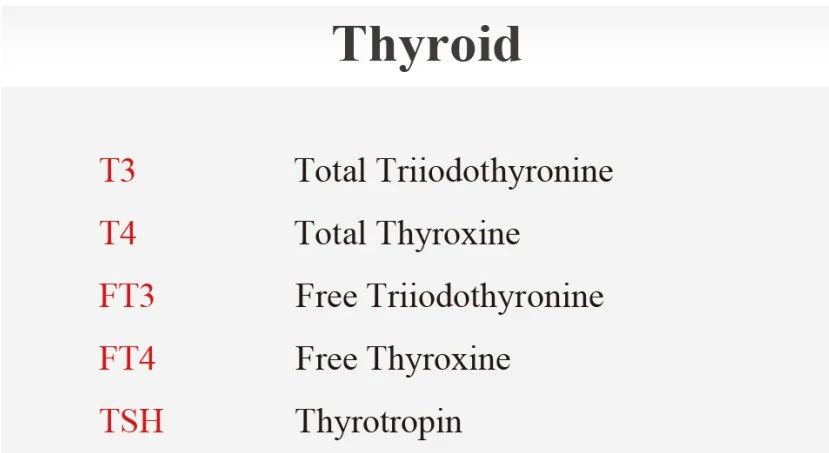
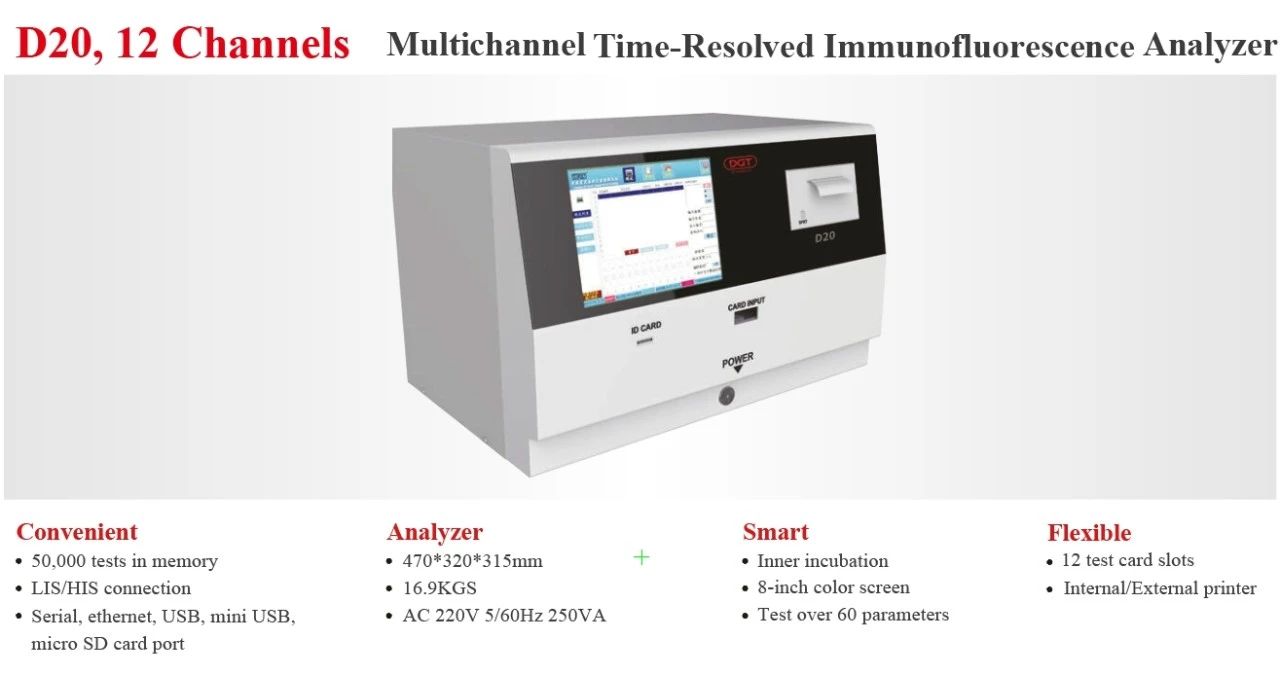
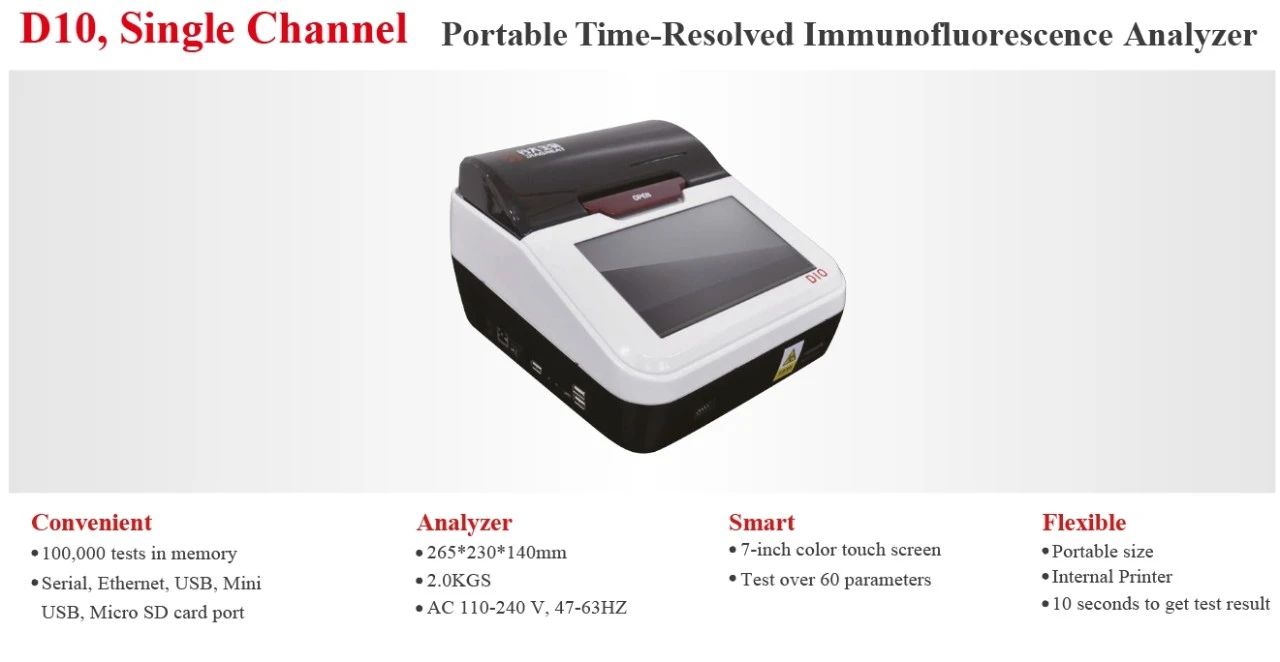
Reference:
Braunstein, GD (2022). Spurious Serum Hormone Immunoassay Results: Causes, Recognition, Management. Touch Rev. Endocrinol. 18(2):141150.
Bilder, G. E. (2014). Thyroid Hormones, Iodine and Iodides and Antithyroid Drugs. in A worldwide yearly survey of new data in adverse drug reactions (pp. 635-643).
Debasish Manna, Gouriprasanna Roy, & Mugesh, G. (2013). Antithyroid Drugs and Their Analogues: Synthesis, Structure, and Mechanism of Action. Accounts of Chemical Research. doi:10.1021/ar4001229
Edet, O., Omon, E., Agwu, M., Eze, A., & Nwigube, M. (2024). Thyroid Hormones and Interference in Thyroid Function Tests: a Review. J. Appl. Sci. Environ. Manage. 28, 3579-3593. doi:10.4314/jasem.v28i11.11
Shahid, M., Ashraf, M., & Sharma, S. (2024). Physiology, Thyroid Hormone. statPearls. doi: https://www.ncbi.nlm.nih.gov/books/NBK500006 /
Shim, C., Chong, R., & Lee, J. H. (2017). Enzyme-free chemiluminescence immunoassay for the determination of thyroid stimulating hormone. talanta, 171, 229-235. doi:10.1016/j. talanta.2017.05.007
Vashist, SK; Luong, JH (2018). Bioanalytical Requirements and Regulatory Guidelines for Immunoassays. in Handbook of Immunoassay Technologies, Academic Press, pp. 81-95.